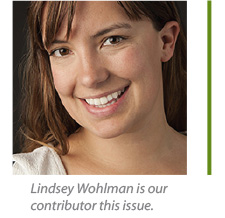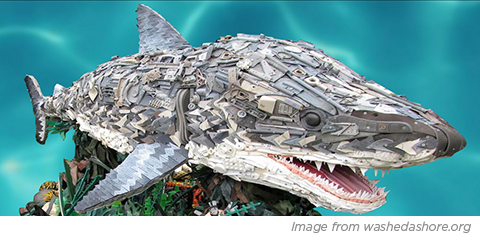 Large scale environmental issues are a nightmare to communicate. They’re hard to describe let alone visualize. There are plenty of great infographics and CGI YouTube clips, but what about real life visualizations? Can they be accurate and even more – fun and engaging? That’s where serious creativity comes in to play.
Large scale environmental issues are a nightmare to communicate. They’re hard to describe let alone visualize. There are plenty of great infographics and CGI YouTube clips, but what about real life visualizations? Can they be accurate and even more – fun and engaging? That’s where serious creativity comes in to play.
For Angela Haseltine Pozzi this all came together while picking up beach trash in her community of Bandon, Oregon. Her regular walks on a beach turned into clean-up events as the ocean pushed more and more plastic pieces ashore.
Instead of disposing of them “properly” (in a landfill as most of the material wouldn’t be easily recycled) she opted to build monumental sculptures out of the colorful plastic. These brightly colored works were a perfect visual aid to discuss ocean pollution. Looking closely, you can easily identify a variety of household items that certainly do not belong in the ocean.

Pozzi’s team has built more than 75 larger-than-life sculptures of sea creatures ranging from seals to turtles to starfish. How much trash has Pozzi “processed” into her art? Current estimates are around 40,000 pounds of plastic. Much more has been collected but not incorporated (and hopefully it will remain in a landfill and not back in the ocean). Together with Bandon community they now have regular clean-up events as well as an arts center to provide education and outreach classes for the community and visitors.
Her works are heading on the road as well. They have been installed in museums and zoos across the country. Perhaps the biggest victory is bringing awareness to an issue that doesn’t resonate to land-locked states such as Colorado (they were installed in the Denver Zoo this last winter). Now they’re heading to the Smithsonian for another temporary exhibition. Here is a list of exhibition locations.
This artwork is an impactful reminder of the challenges our planet faces with the current plastics paradigm. In past blog posts here & here, we’ve referred to a report by the New Plastics Economy which predicts if we don’t change the way we produce and reprocess plastics, by 2050 there will be more plastic in the ocean than fish. Their recommended solutions include decoupling plastics from virgin petroleum feedstock, as well as using compostable products in foodservice settings. Through our GreenStripe and BlueStripe product lines and our commitment to advocacy, Eco-Products is working to make this new plastics vision a reality.
To see more of the works go to WashedAshore.org.
They are also looking for volunteers.
For more on the New Plastics Economy go here.